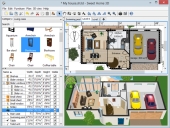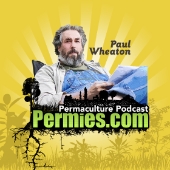John Pollard wrote:Pretty cool for those with large properties. I could also see it being useful for consultants and project managers that do work in multiple locations. It's too bad the government won't let us have the same level of GPS accuracy and coverage as they have. The National Forest employees can come out and find a corner of federal land within an inch but a handheld GPS or cell phone is lucky to get within 10-20 feet for me, if I can catch that many satellites at one time.
If we had fedgov's GPS, FarmOS would be useful even for small places like this. I've got a little valley that, at it's steepest, is too steep to walk up in a few spots but USGS topo maps makes it look like a gentle dip. There's so many trees here that google earth satellite view doesn't even show much terrain.
I'll be getting a transit to mark out some contour lines for earthworks and I may just map out the whole property with it. In winter, when all the leaves have fallen, if I stand in the right spot, I can see every sq ft of this place which makes it easy to visualize and locate things. If I had the 1000+ acre property across the road from me, FarmOS would be very useful. Meanwhile, I already use TurboCAD for scaled drawings and have one of the property in 2D. The only data I need to track is what's planted where in the garden and eventually, goat breeding. I'll be using Open Source Kintraks for that.
consumer GPS is the same accuracy/precision as government GPS - it's one and the same signal. Your cellphone is the limiting factor - you need one with dual frequency so it can receive the new & improved L5 band.
"During the 1990s, GPS quality was degraded by the United States government in a program called "Selective Availability"; this was discontinued in May 2000 by a law signed by President Bill Clinton.[6]
When selective availability was lifted in 2000, GPS had about a five-meter (16 ft) accuracy. The latest stage of accuracy enhancement uses the L5 band and is now fully deployed. GPS receivers released in 2018 that use the L5 band can have much higher accuracy, pinpointing to within 30 centimetres or 11.8 inches.[11][12]"



_bumblebee_by_Loxley-_StoryConnective.org.jpg)


